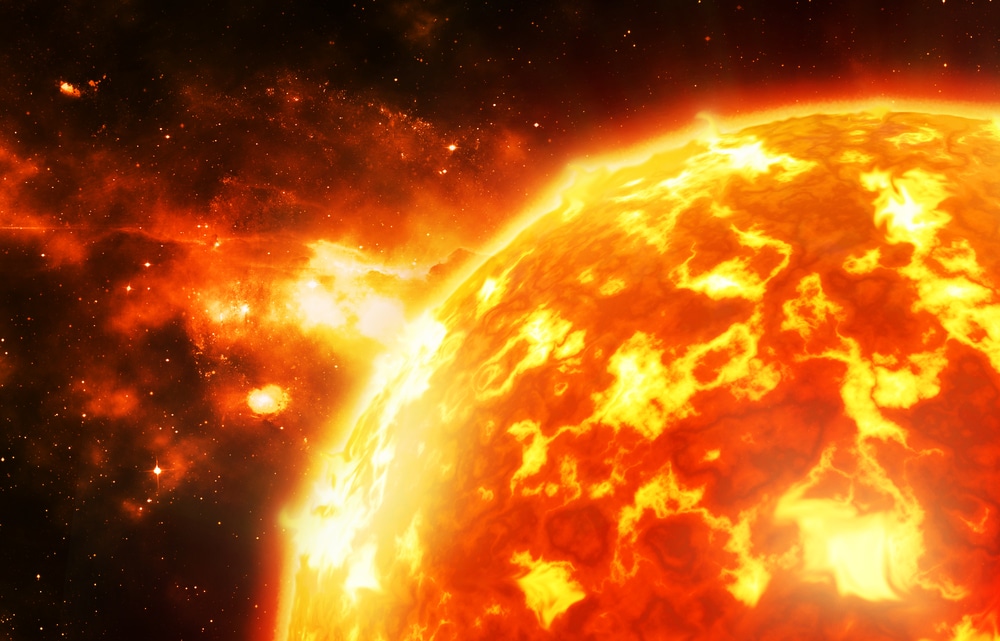About every 11 years, the sun goes through what’s known as ‘solar maximum’, when many bizarre dark spots appear on its surface.
These ‘sunspots’ – which can cluster together and form what looks like an archipelago – are caused by massive changes in our star’s magnetic field.
They also shoot out violent explosions of energy towards Earth, causing ‘solar storms’ that can potentially damage satellites and disrupt the internet.
Unfortunately, a new study reveals that this solar maximum is coming sooner than expected – most likely in early 2024. The new forecast comes from an Indian team of researchers and contrasts with the latest forecast from NASA, which puts its arrival at late 2025.
Dr Dibyendu Nandi, a physicist from the IISER Kolkata Center of Excellence in Space Sciences in India, led the new study.
He said it is ‘not possible to predict the intensity and consequences’ of solar storms this early, but we should learn more as the new year approaches.
‘The most intense storms can sometimes result in catastrophic orbital decay of low Earth-orbiting satellites and disrupt satellite-based services such as communications and navigational networks,’ he told MailOnline.
‘They can also induce strong disturbances in the geomagnetic field tripping electric power grids located in high latitude regions.
‘Of course, they also create beautiful auroras so we can expect 2024 to be a good year for aurora hunters.’
Dr Nandi and his colleagues have managed to come up with a new way to detect the solar maximum, but understanding it requires some basic knowledge about our solar system’s life-giving star.
The sun is a huge ball of electrically charged hot gas that moves, generating a powerful magnetic field, officially known as the dipole field.
This dipole field – which stretches from one pole of the sun to the other much like Earth’s – goes through a cycle, called the solar cycle.
Roughly every 11 years or so, the sun’s magnetic field completely flips, meaning the north and south poles switch places.
This solar cycle affects activity on the surface of the sun, including the dark sunspots which are caused by the sun’s magnetic fields.
One way scientists can track the solar cycle is by counting the number of sunspots and when exactly they appear, mostly using satellites.
The beginning of an 11-year solar cycle, when the sun has the fewest sunspots, is known as the solar minimum – but over time the number of sunspots increases.
The middle of the solar cycle is the solar maximum, when the sun has the most sunspots. It’s during this solar maximum when the most violent space weather is expected.
The researchers say predicting exactly when this peak is going to occur – and therefore when the most violent space weather hits Earth – has been challenging.










